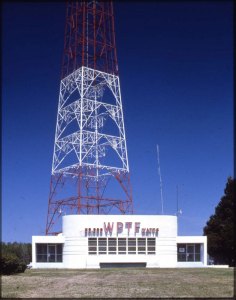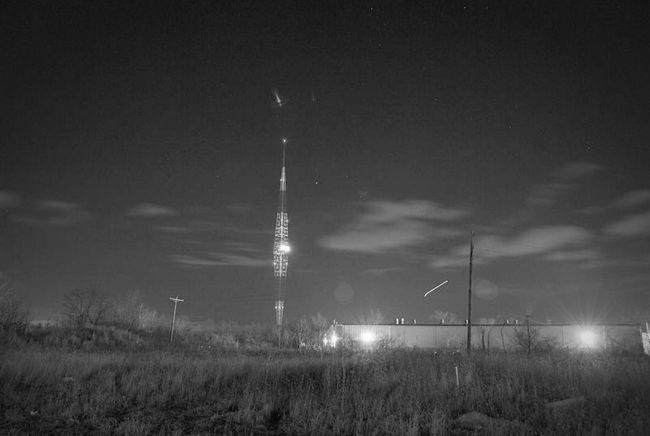(Source: ABC11.com via Mike Hansgen)
The distinct Art Deco style clearly defines the WPTF radio station as a 1940’s classic.
With rounded windows and curved edges, the building looks tiny on the outside, but cuts deep underground into a shelter that allowed announcers to broadcast through wars and hurricanes.
Today, it’s hidden behind tall shrubs, a chain-link fence, and a set of train tracks – it often goes unnoticed, a relic from a long past era of Raleigh history.
Decades ago, this station was staffed 24-hours a day, which means it provides amenities like a kitchen and shower. However, this enticing building has been closed to the public, mostly forgotten, for decades. Nearly 80 years old and sealed to most of the outside world, it harbors dust-coated secrets that time forgot, like a living time capsule.[…]
Click here to read the full article and view photos of the site.
Also, check out the following photos of WTPF courtesy of this imgur.com account:



